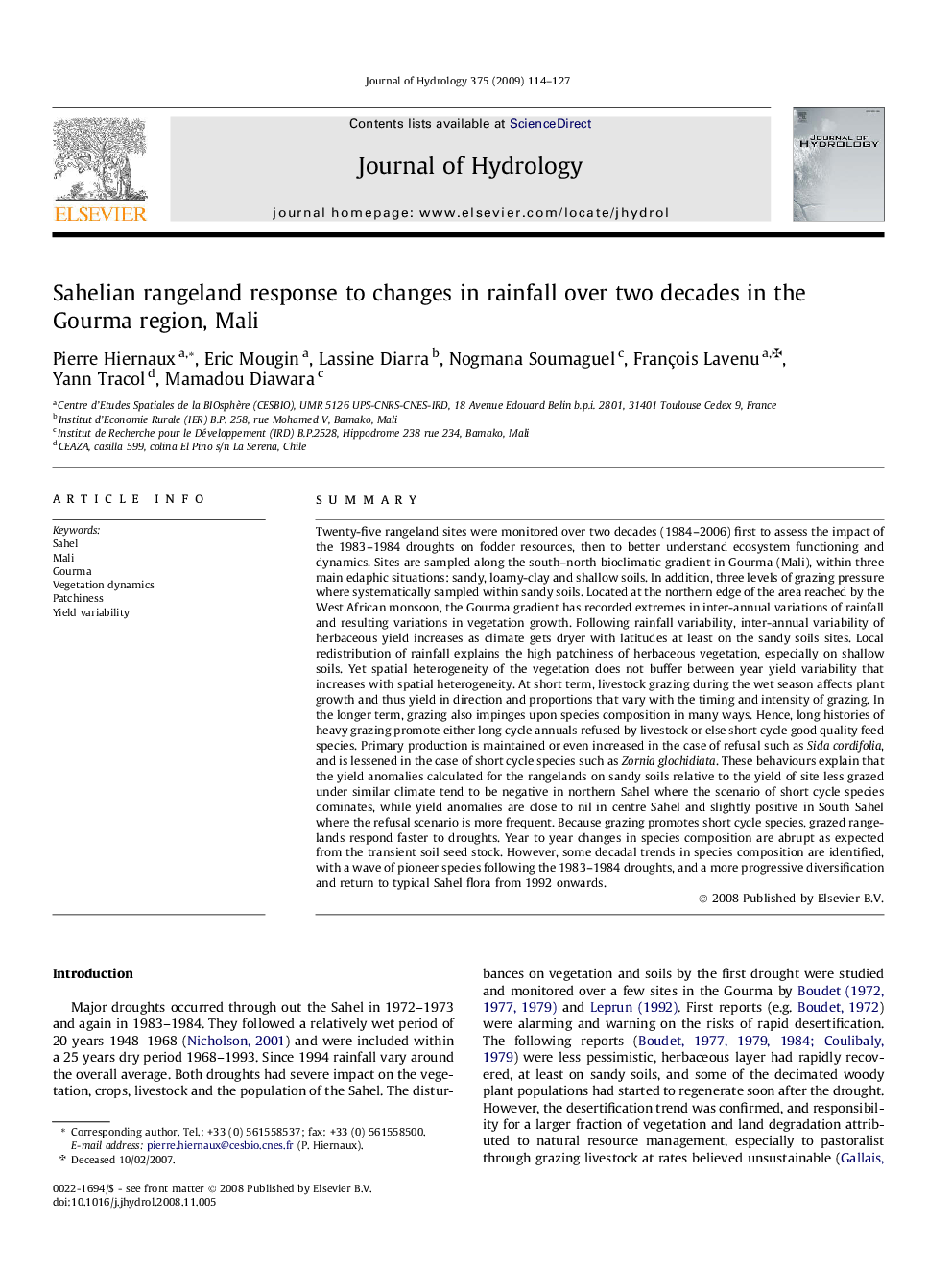| Article ID | Journal | Published Year | Pages | File Type |
|---|---|---|---|---|
| 4578689 | Journal of Hydrology | 2009 | 14 Pages |
SummaryTwenty-five rangeland sites were monitored over two decades (1984–2006) first to assess the impact of the 1983–1984 droughts on fodder resources, then to better understand ecosystem functioning and dynamics. Sites are sampled along the south–north bioclimatic gradient in Gourma (Mali), within three main edaphic situations: sandy, loamy-clay and shallow soils. In addition, three levels of grazing pressure where systematically sampled within sandy soils. Located at the northern edge of the area reached by the West African monsoon, the Gourma gradient has recorded extremes in inter-annual variations of rainfall and resulting variations in vegetation growth. Following rainfall variability, inter-annual variability of herbaceous yield increases as climate gets dryer with latitudes at least on the sandy soils sites. Local redistribution of rainfall explains the high patchiness of herbaceous vegetation, especially on shallow soils. Yet spatial heterogeneity of the vegetation does not buffer between year yield variability that increases with spatial heterogeneity. At short term, livestock grazing during the wet season affects plant growth and thus yield in direction and proportions that vary with the timing and intensity of grazing. In the longer term, grazing also impinges upon species composition in many ways. Hence, long histories of heavy grazing promote either long cycle annuals refused by livestock or else short cycle good quality feed species. Primary production is maintained or even increased in the case of refusal such as Sida cordifolia, and is lessened in the case of short cycle species such as Zornia glochidiata. These behaviours explain that the yield anomalies calculated for the rangelands on sandy soils relative to the yield of site less grazed under similar climate tend to be negative in northern Sahel where the scenario of short cycle species dominates, while yield anomalies are close to nil in centre Sahel and slightly positive in South Sahel where the refusal scenario is more frequent. Because grazing promotes short cycle species, grazed rangelands respond faster to droughts. Year to year changes in species composition are abrupt as expected from the transient soil seed stock. However, some decadal trends in species composition are identified, with a wave of pioneer species following the 1983–1984 droughts, and a more progressive diversification and return to typical Sahel flora from 1992 onwards.
